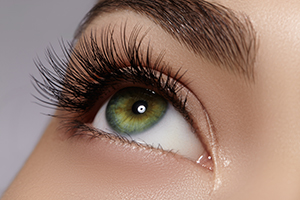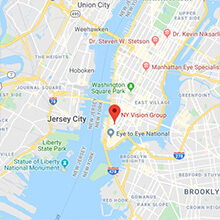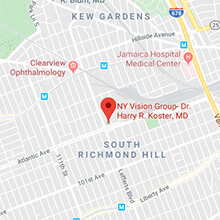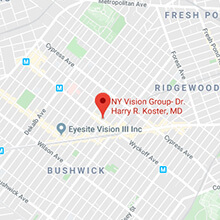 Latisse is a product used to lengthen, thicken and darken eyelashes. It has been on the market since the FDA approved it in December 2008 and is actually a version of a glaucoma medication in eye drop form called bimatoprost (brand name Lumigan), in use since FDA approval in 2001. During that period, eye doctors and their glaucoma patients noticed that the drug had a noticeable side effect: over time patients using the drop developed longer, lusher eyelashes. Consequently, Latisse was introduced to be used to cosmetically enhance eyelashes. Because it is a prescription medication, with some side effects, it should be used under the guidance of trained eye professionals, such as the doctors at NY Vision Group.
Latisse is a product used to lengthen, thicken and darken eyelashes. It has been on the market since the FDA approved it in December 2008 and is actually a version of a glaucoma medication in eye drop form called bimatoprost (brand name Lumigan), in use since FDA approval in 2001. During that period, eye doctors and their glaucoma patients noticed that the drug had a noticeable side effect: over time patients using the drop developed longer, lusher eyelashes. Consequently, Latisse was introduced to be used to cosmetically enhance eyelashes. Because it is a prescription medication, with some side effects, it should be used under the guidance of trained eye professionals, such as the doctors at NY Vision Group.
How Does Latisse Work?
According to studies, Latisse lengthens, thickens and darkens eyelashes through a process that isn’t fully understood. Like the hair on your head, eyelashes sprout, grow for a while and eventually fall out. Latisse extends the growth phase and also increases the number of hairs that sprout. During clinical studies, full results appeared after 12 to 16 weeks of daily use. You apply Latisse by dabbing it on your upper lash line each night with the sterile applicators supplied. The medication spreads to the lower lash line automatically as you blink. According to the manufacturer, it should not be applied to the eye or onto the lower lid and applicators should be discarded after one use. Re-using applicators, even just once the next evening, can cause serious problems, such as an eye infection or allergic reaction. In addition, care should be taken when applying Latisse as it may promote hair growth on other skin areas.
After two months of nightly use, you may begin to see results. After three or four months, your doctor at NY Vision Group may recommend a treatment schedule of every two days. If you stop using Latisse, your eyelashes will gradually return to their former state.
Study participants experienced these results after 16 weeks:
- Eyelash length increased by 25%.
- Thickness and fullness increased by 106%.
- Eyelash darkness increased by 18%.
Side Effects
According to clinical studies conducted before FDA approval, Latisse eyelash lengthener is safe for most people. However, you may not be a candidate for it if you have certain inflammation-related eye problems such as in (such as conjunctivitis or uveitis), severe allergies or skin infections of the upper eyelids. Furthermore, because the active ingredient in Latisse lowers eye pressure, patients who are already using medications for glaucoma or ocular hypertension should consult with their eye doctor at NY Vision Group before trying Latisse so eye pressure can be closely monitored.
Most clinical study participants had no problems if Latisse accidentally got into their eyes. But a few did experience side effects that included dry eyes and eyelid skin darkening. Another side effect that the manufacturer has reported, although was not reported in the clinical studies, is permanent brown pigmentation of the iris. Be sure to tell your eye doctor at NY Vision Group if you have any of the above side effects, as well as any vision problems, eye infections or allergic reactions. If you are planning any type of vision correction procedure, you should also tell us of your use of Latisse.
Please contact our New York or Queens office if you are interested in using Latisse or other cosmetic eye surgery.




